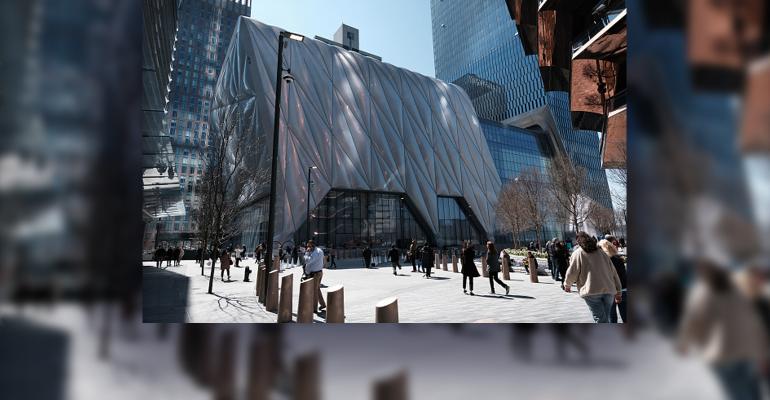In March, the 28-acre Hudson Yards development opened on Manhattan's West Side, finally connecting the neighborhood of the Jacob K. Javits Convention Center to the rest of Midtown. Besides the glass towers, hotels, shopping mall, restaurants, and attractions, though, is a venue that could be a blueprint for how convention centers are designed in the future.
The Shed is a musical and visual arts center comprising eight floors of gallery space and a theater that holds 1,250 people sitting or 2,000 standing. But it's the 17,000-square-foot courtyard space that holds the most interesting possibilities for business events. The reason: A huge telescoping shell that slides from just above The Shed's top floor to the far edge of the courtyard converts that 17,000 square feet to indoor space.
Technology from the moving cranes found in the shipping and rail industries is what allows The Shed to have this ability, as well as its lightweight materials—in fact, a 180-horsepower motor is all that is needed to move the entire shell on its wheels. This article in Wallpaper magazine details exactly how the shell and its transport mechanism work, and shows photos.
One group of folks who are likely to read that article closely: the heads of major convention centers, who could possibly incorporate such a feature into an expansion project. With a shell that adds to their indoor space on demand, these centers could keep current show clients who are growing larger and also bring in more concurrent large shows, but without having to expand the center's permanent footprint and risk having underutilized space for much of the year.





